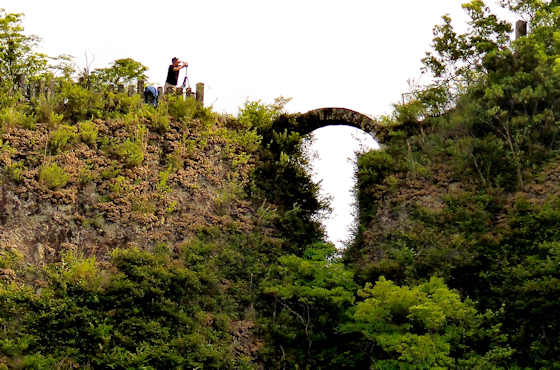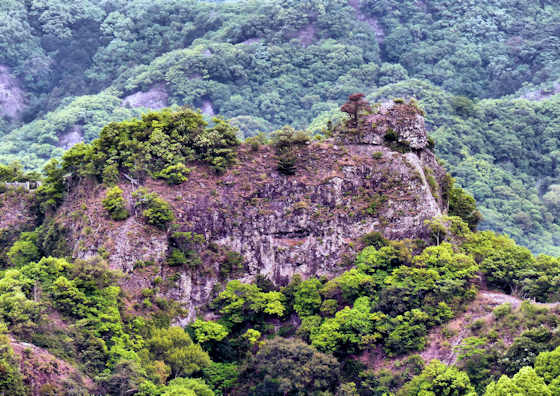Mumyo Bridge
The pinnacles of rock that rise behind
Tennenji Temple and the
Kawanaka Fudo are called Tennenji Yaba, and clearly visible spanning a precipitous gap is the unusual Mumyo Bridge. When I first saw it, almost twenty years ago, it was very much off limits to visitors, but nowadays it is possible to climb up, though you are repeatedly warned that you do so at your own risk.
Coming down towards Tennenji from
Choanji Temple you catch glimpses of the cliffs and rock formations that are typical of the Kunisaki peninsula. Anywhere such landscapes can be found in Japan, you will find sites connected to Yamabushi, the mountain ascetics who were drawn to such places of spiritual power.
Many of these areas will still have the remains of training routes used by the Yamabushi. This rock formation above is adjacent to the Mumyo Bridge and you can see the chains used by the monks to clamber along these "pilgrimage" routes.
Many of these sites in the Kunisaki peninsula were connected along a pilgrimage trail that began at Usa Hachimangu and then wound its way around the peninsula. This ancient route has been revived by the creation of the
Kunisakihanto Minemichi Long Trail which closely follows the route. There is not much in the way of infrastructure along the route, and certain sections do involve having to use chains to get up and over steep sections.
I was on my second day walking along the route which I was using as a rough guide to get me around the peninsula to visit the first seven of the temples on the Kyushu Fudo Myo pilgrimage which all are found in the Kunisaki area.
After leaving Tennenji the route heads over the ridge to the next valley and passes close to the Mumyo Bridge, however, I was carrying a full pack for a multi-night hike and decided not to take the side-route to the bridge as I did not fancy descending loaded up with so much weight. Several times I would have to navigate such steep and dangerous sections and didn't want to push it.
The trail was hairy enough as it was, and I would certainly not recommend it to inexperienced hikers, however, the views from the pass over the ridge were spectacular.

































































